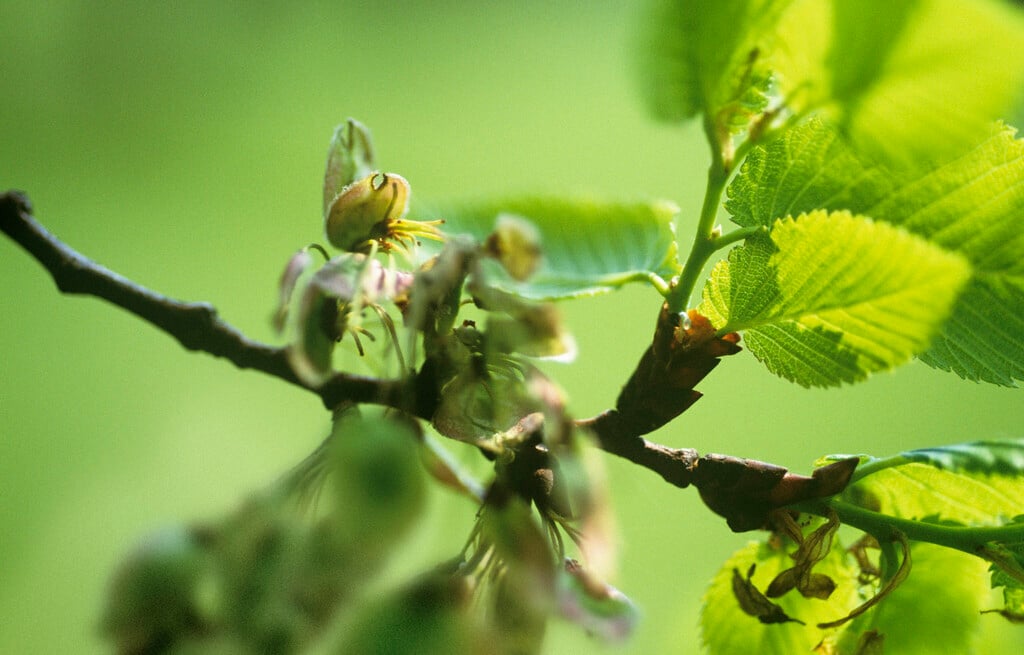Ulmus procera
English elm
A large, deciduous tree, commonly known as the English elm, which was once a dominant feature of the British countryside growing up to 35 meters tall with a broad, rounded crown. Since the prevalence of Dutch elm disease, it is now only found occasionally found in hedgerows or woodland in England and Wales. The bark is grey-brown, rough and fissured, often with suckers growing from the base of the trunk. The twigs and oval pointed buds are covered in fine, reddish hairs. The leaves are dark green, approximately 4-9 cm in length, sharply double-toothed, hairy and rough to touch on the top surface. The leaves are round to oval with a characteristic asymmetrical base, that taper to a sharp point and turn butter-yellow in autumn. Flowers, rarely if ever produced, are dark pink to red and hang in tassels, appearing between February and March and once pollinated by the wind develop into tiny, winged fruits, known as samaras
Synonyms
Ulmus minor 'Vulgaris'Ulmus campestris
see moreUlmus campestris misapplied
Ulmus procera Dutch elm resistant
Ulmus minor var. vulgaris
Size
Ultimate height
Higher than 12 metresTime to ultimate height
more than 50 yearsUltimate spread
Wider than 8 metresGrowing conditions
Moisture
Well–drainedpH
Acid, Alkaline, NeutralColour & scent
| Stem | Flower | Foliage | Fruit | |
| Spring | Green | |||
|---|---|---|---|---|
| Summer | Green | |||
| Autumn | Yellow | |||
| Winter |
Position
- Full shade
- Full sun
- Partial shade
Aspect
East–facing or North–facing or South–facing or West–facing
Exposure
Exposed or Sheltered Hardiness
H7Botanical details
- Family
- Ulmaceae
- Native to GB / Ireland
- Yes
- Foliage
- Deciduous
- Habit
- Spreading branched, Suckering
- Genus
Ulmus are deciduous trees, often large, with elliptic or ovate leaves often colouring well in autumn; inconspicuous flowers are followed by winged fruits
- Name status
Correct
How to grow
Cultivation
Grow in any well drained soil in full sun or partial shade
Propagation
Propagate by softwood cuttings in summer. Chip budding and grafting may also be used
Suggested planting locations and garden types
- Wildlife gardens
- Hedging and screens
Pruning
Pruning group 1 or see our page on hedge pruning
Pests
May be susceptible to aphids, bark beetles, leafhoppers and elm gall mites
Diseases
Maybe susceptible to dutch elm disease
Get involved
The Royal Horticultural Society is the UK’s leading gardening charity. We aim to enrich everyone’s life through plants, and make the UK a greener and more beautiful place.
